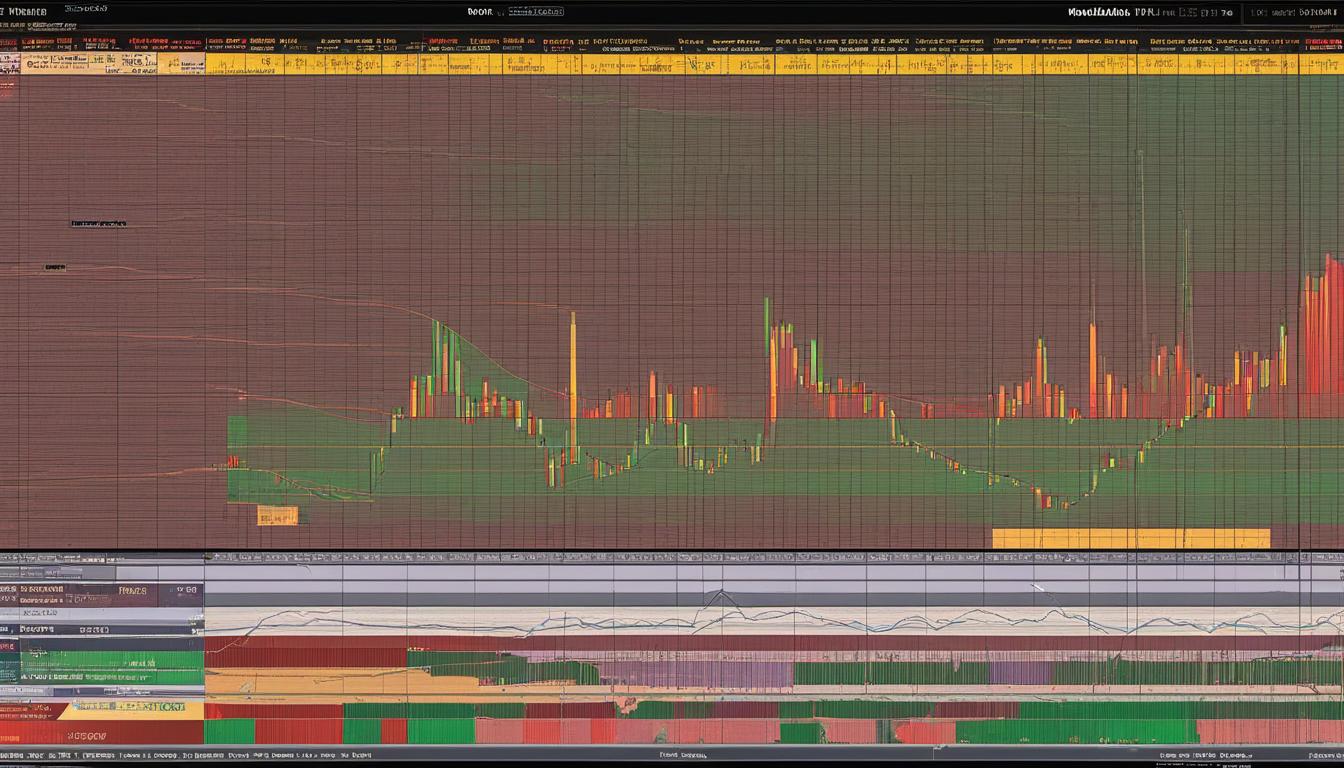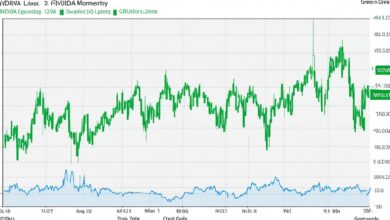From the Past to the Future: Understanding Historical Volatility vs Implied Volatility


Volatility is a key aspect of financial markets that plays a significant role in option pricing, risk analysis, and trading strategies. When it comes to understanding volatility, two important concepts come into play: historical volatility and implied volatility. While both provide insights into a stock’s price movements, they differ in their approach and application.
Historical volatility refers to the past price movements of a stock or index. It is calculated by measuring the standard deviation of these price movements over a specific period, typically one year. Historical volatility provides a retrospective view of a stock’s volatility, helping traders and investors assess its past behavior.
On the other hand, implied volatility is a measure of a stock’s volatility in the future based on option prices. It is derived from the prices of options contracts associated with the stock. Implied volatility reflects market expectations and provides insights into how much a stock is anticipated to move in the future.
Both historical and implied volatility are essential in option pricing. Historical volatility helps traders evaluate the risk associated with a stock by analyzing its past performance. Implied volatility, on the other hand, enables traders to determine the relative value of options contracts and identify potential trading opportunities.
Understanding the differences between historical and implied volatility is crucial for anyone involved in option pricing, volatility analysis, and option trading strategies. By incorporating both types of volatility into their analysis, traders and investors can make more informed decisions and effectively manage market risks.
Key Takeaways:
- Historical volatility reflects past price movements, while implied volatility is a measure of future expectations based on option prices.
- Historical volatility is calculated from the standard deviation of past stock movements, while implied volatility is derived from option prices.
- Both historical and implied volatility play a role in option pricing and risk analysis.
- Higher volatility generally leads to higher option prices, indicating increased potential for significant price movements.
- Traders can use implied volatility to assess the relative value of options contracts and identify potential trading opportunities.
The Difference Between Historical Volatility and Implied Volatility
When it comes to understanding market dynamics and option pricing, it is essential to differentiate between historical volatility and implied volatility. Historical volatility is a backward-looking measure that reflects past price movements of a stock or index. It is calculated by taking the standard deviation of these price movements over a specific period, usually one year.
On the other hand, implied volatility is a forward-looking measure that quantifies a stock’s volatility based on the prices of options contracts associated with that stock. Implied volatility is a market expectation of how much a stock is likely to move in the future, and it plays a crucial role in option pricing.
To summarize, historical volatility represents past price movements, while implied volatility indicates market expectations for future price movements. Both measures are important for understanding and evaluating market risks, option pricing, and trading strategies.
The Difference Between Historical Volatility and Implied Volatility
Historical Volatility
“Historical volatility is a backward-looking measure that reflects past price movements of a stock or index. It is calculated by taking the standard deviation of these price movements over a specific period, usually one year.”
Implied Volatility
“Implied volatility is a forward-looking measure that quantifies a stock’s volatility based on the prices of options contracts associated with that stock. It is a market expectation of how much a stock is likely to move in the future.”
| Historical Volatility | Implied Volatility | |
|---|---|---|
| Definition | Reflects past price movements | Quantifies future volatility expectations |
| Calculation | Takes the standard deviation of past price movements | Derived from options contract prices |
| Timeframe | Typically one year | – |
| Role | Understanding market risks and historical performance | Option pricing and risk analysis |
The Role of Volatility in Option Trading Strategies
Volatility is a key factor in option trading strategies, as it influences the pricing and potential profitability of options contracts. Traders and investors utilize both historical and implied volatility to assess the relative value of options and identify potential trading opportunities. Additionally, the shape of the implied volatility skew, which refers to the different implied volatilities of options with different strike prices, can provide insights into market expectations and guide trading strategies.
Implied Volatility Skew
The implied volatility skew is a graphical representation of the relationship between implied volatility and strike prices of options. It is often displayed as a curve or smile on a volatility chart. The shape of the implied volatility skew can indicate market expectations and sentiment. For example, if the implied volatility is higher for out-of-the-money options compared to in-the-money options, it suggests that market participants anticipate larger price moves in the near future.
Traders can leverage the information provided by the implied volatility skew to tailor their option trading strategies. They may choose to implement strategies such as vertical spreads, which involve buying and selling options with different strike prices but the same expiration date, to take advantage of the skew. By understanding the implied volatility skew, traders can better align their strategies with market expectations and potentially increase their chances of success.
| Option Trading Strategy | Description |
|---|---|
| Vertical Spreads | Trading strategy that involves buying and selling options with different strike prices but the same expiration date. |
| Iron Condor | A neutral options strategy that profits from a stock trading in a range with low volatility. |
| Straddle | An options strategy involving the purchase of both a call and a put on the same underlying asset with the same strike price and expiration date. |
Understanding the role of volatility in option trading strategies is essential for traders and investors looking to capitalize on market opportunities. By considering both historical and implied volatility, as well as the implied volatility skew, traders can make more informed decisions and create strategies that align with market expectations. Incorporating volatility analysis into option trading strategies can help manage risk and improve the likelihood of achieving desired outcomes.
Calculating Historical Volatility and Implied Volatility
When it comes to measuring volatility, both historical volatility and implied volatility are essential concepts. Historical volatility provides insights into past price movements, while implied volatility helps determine future expectations based on option prices. Calculating these two types of volatility involves different methodologies and data sources.
Historical Volatility Calculation
Historical volatility is commonly calculated using the standard deviation of past price movements. This measure quantifies the dispersion of stock or index prices over a specific timeframe, typically one year. Traders and analysts often use historical volatility to assess the level of risk associated with a particular security. By analyzing past price fluctuations, they can gain a better understanding of how much a stock tends to move on average.
To calculate historical volatility, first, gather the daily closing prices of the stock or index you are interested in over the desired timeframe. Then, calculate the logarithmic returns of these prices by taking the natural logarithm of the ratio of each day’s closing price to the previous day’s closing price. Finally, compute the standard deviation of these logarithmic returns. The resulting value represents the historical volatility of the stock or index.
Volatility Index and Volatility Smile
While historical volatility provides insights into individual stocks or indexes, the volatility index offers a broader measure of implied volatility for the market as a whole. The most well-known volatility index is the VIX, which reflects the expected volatility of the S&P 500 index over the next 30 days. Traders and investors often use the VIX to gauge market sentiment and assess overall market risk.
Furthermore, the volatility smile is a graphical representation of implied volatility across different strike prices of options contracts. It shows how implied volatility varies depending on the distance between the strike price and the current price of the underlying asset. The volatility smile can reveal market expectations and potential trading opportunities, as it demonstrates how options traders perceive the likelihood of significant price movements at different strike prices.
| Volatility Measure | Calculation Methodology | Application |
|---|---|---|
| Historical Volatility | Standard deviation of past price movements | Risk assessment, determining average price movement |
| Implied Volatility | Derived from options prices using models like Black-Scholes | Option pricing, market expectations, trading opportunities |
| Volatility Index (e.g., VIX) | Based on option prices of a specific index or market | Market sentiment, overall market risk |
| Volatility Smile | Graphical representation of implied volatility across different strike prices | Market expectations, option valuation, trading strategies |
By understanding how to calculate historical volatility and implied volatility, traders and investors can gain valuable insights into market dynamics and make informed decisions. These volatility measures, combined with other risk management strategies, can help assess market risks, identify trading opportunities, and adjust positions accordingly.
Using Volatility in Risk Management Strategies
Volatility is a crucial factor to consider in risk management strategies. It indicates the degree of uncertainty and potential price fluctuations in the market. By incorporating volatility analysis into risk assessments, traders and investors can make more informed decisions and develop effective risk management strategies.
One key aspect of using volatility in risk management is understanding market risks. Higher volatility levels often indicate increased market risks, as prices can experience significant fluctuations. Traders and investors can use historical and implied volatility measures to gauge the level of risk present in the market and adjust their strategies accordingly.
Financial risk analysis plays a vital role in risk management strategies. By analyzing historical volatility, market participants can assess how much a security has moved in the past and anticipate potential future movements. Implied volatility, on the other hand, provides insights into market expectations for future price fluctuations. By comparing historical and implied volatility, traders can identify discrepancies and potential trading opportunities.
| Risk Management Strategies | Benefits |
|---|---|
| Diversification | Diversifying investments across different assets can mitigate the impact of volatility on a portfolio. |
| Hedging | Using options or futures contracts to hedge against potential losses caused by adverse price movements. |
| Position Sizing | Adjusting the size of positions based on the level of volatility and perceived risk. |
| Stop-Loss Orders | Placing predetermined orders to automatically exit a position if prices reach a certain level, limiting potential losses. |
By incorporating volatility analysis into risk management strategies, traders and investors can proactively manage their exposure to market risks and make well-informed decisions. It allows them to adjust position sizes, diversify their portfolios, and implement effective hedging techniques to mitigate potential losses caused by volatility. By staying vigilant and adapting to changing market conditions, market participants can effectively navigate the uncertainties associated with volatility.
Conclusion
In conclusion, understanding stock market volatility is crucial for investors and traders. Historical volatility provides insights into past price movements, while implied volatility helps predict future expectations. By analyzing both types of volatility, market participants can make informed decisions and manage risks effectively.
Volatility prediction plays a significant role in option pricing and risk analysis. By incorporating historical and implied volatility into their analysis, traders can assess the relative value of options contracts and identify potential trading opportunities. This information allows them to adjust their strategies and protect their portfolios from unexpected market movements.
Overall, stock market volatility is a dynamic concept that requires continuous monitoring and analysis. Traders and investors should consider both historical and implied volatility when making investment decisions. By doing so, they can navigate the market with greater confidence and increase their chances of success.
FAQ
What is the difference between historical volatility and implied volatility?
Historical volatility reflects past price movements, while implied volatility provides insights into future expectations.
How does volatility impact option pricing?
Higher volatility generally leads to higher option prices, as there is more potential for significant price movements.
What is the volatility smile?
The volatility smile refers to the different implied volatilities of options with different strike prices, providing insights into market expectations and potential trading strategies.
How is historical volatility calculated?
Historical volatility is calculated by taking the standard deviation of past price movements over a specific period, usually one year.
How is implied volatility derived?
Implied volatility is derived from the prices of options contracts and can be obtained using option pricing models like the Black-Scholes model.
How can volatility be used in risk management strategies?
Understanding volatility can help traders and investors in determining appropriate position sizing, hedging strategies, and stop-loss levels to manage market risks effectively.
What is the role of volatility in option trading strategies?
Volatility plays a crucial role in option trading strategies, as traders can use implied volatility to assess the relative value of options contracts and determine potential trading opportunities.



